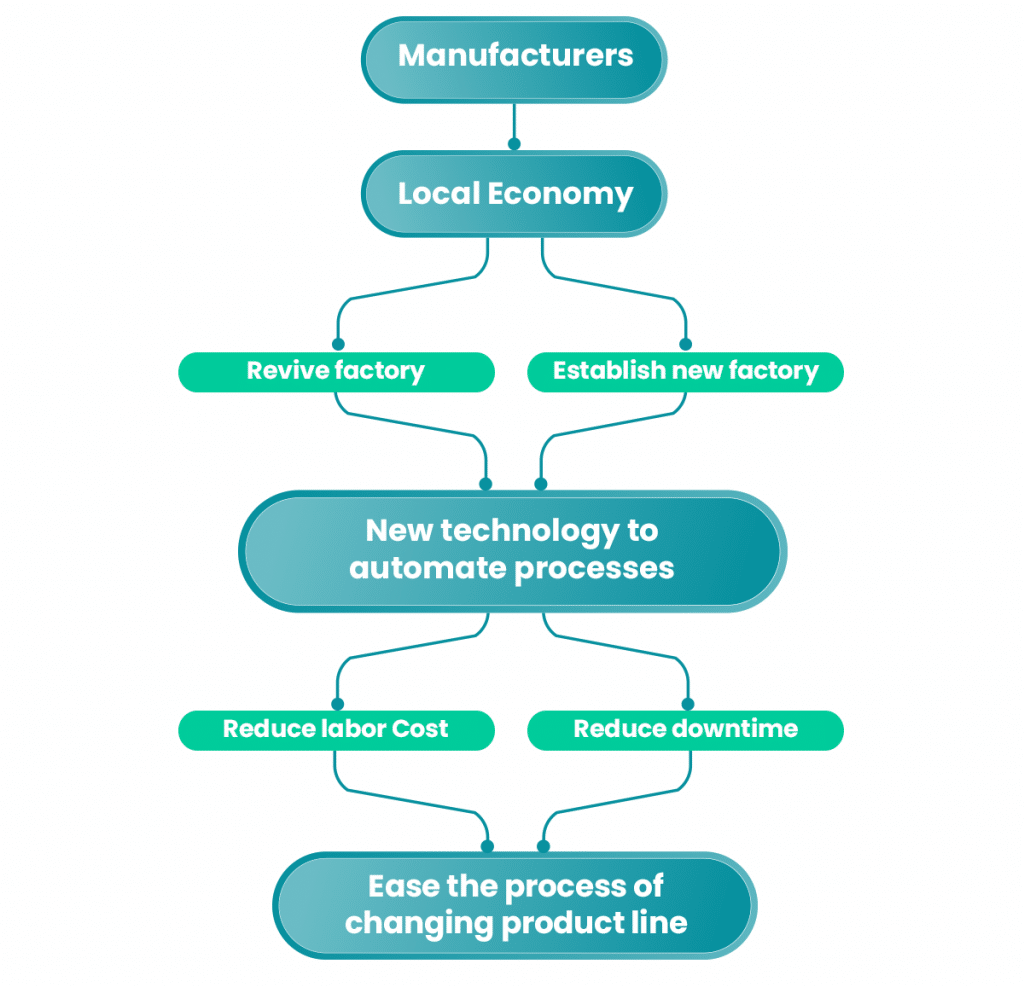Digital Transformation: A Window of Opportunities for the Manufacturing Industry.
In our last blog, we discussed how digitization is bringing optimized results to the table for the manufacturing industry. In this blog, we will be talking about how COVID-19 and the changing landscape are pushing the manufacturing industry to reform digitally.
 5 Mins Read
5 Mins Read 
Introduction
Coronavirus has caused major disruption in all the major industries. Manufacturing firms, serving the companies who are thriving in today’s scenario, have seen an increase in demand, while others including the automotive industry, aviation, and energy have languished, not to mention, they all have been grappling with their supply chain. With the Pandemic bringing in the “new normal” phenomenon, manufacturers are well aware that it will leave fundamental changes in its wake at the end of the pandemic.
Did you know approximately 84% of leaders believe that Industry 4.0 will be extremely important for the manufacturing industry worldwide?
Today’s manufacturers are aiming towards local economies instead of going global, posing multiple obstacles for manufacturers worldwide.
We can say that Industry 4.0 is a window of opportunities for manufacturers and the sectors they serve today. Let’s walk through the major advantages that the manufacturing industry has seen during the Pandemic.
Transform Your Business Digitally With Us
A few advantages are listed below of Industry 4.0
Remote Product Development & Digital Investment
The emergence of COVID-19 has posed several obstacles for the manufacturing industry, one of them being the production of products. It’s very unlikely for manufacturers to remotely design and develop a product, for obvious reasons. During COVID-19, with the aid of digital transformation service providers, manufacturers switched to automated processes and software to develop products and share CAD files to algorithms that automatically detect products’ quality. This has helped the employees to work remotely without having to interact with them on the floor.
Moreover, manufacturers who are willing to take extra steps to digitize the product development process are now utilizing the digital twin to design, develop, and analyze new products remotely. The digital twin allows manufacturers to recreate a product and stimulate its performance without touching the real product, or bending metal.
Maintain Efficient Workflow
While most of the employees were unable to work from the factory, manufacturers were facing humongous downtime issues. Many manufacturers began using digital task lists and job routers that ensured no machine or work were overall as it will reduce disrupted due to the non-availability of a worker or the staff to solve the problem. The job routers stored all the related information in the cloud ensuring seamless information sharing between the teams. This enhanced communication between the employees and allowed manufacturers to work tension-free.
Remote Access of Suppliers
Due to the havoc wrecked by COVID-19, few industries that had high demand, were facing issues getting hands on the material and products. Manufacturers found it tedious to look for alternative suppliers due to the lack of proper online infrastructure. Hence, manufacturers switched to digital tools, procurement websites, and Enterprise Resource Planning solutions to secure suppliers for the materials with the help of digital transformation service providers. These tools and ERP solutions empowered manufacturers to rapidly identify suppliers and get their hands on backup supply information in the need of the hour.
Exposure to New Workplace Environment
The manufacturing industry is one sector where maintaining social distancing without disturbing the operations on the floor is a tedious task. During the time of the pandemic, many manufacturers had to grapple around to keep the operations running smoothly without increasing the chances of people getting infected on the floor. Hence, they automated the machinery and installed Remote Monitoring System (RMS).
Automating the machinery ensured that professionals do not come into contact with people on the floor and RMS empowered management to access the machinery and manage the operations remotely. This has helped many manufacturers to keep their factories up and running without risking the lives of many.
Supply Chain Resilience
There was a time when the Supply chain network wasn’t considered as vital to stay on the edge over other competitors in the market; however, with changing times and a pandemic on our hands, the supply chain has become one of the most pivotal parts of a business to survive and thrive. Hence, manufacturers are now investing more in making their supply chain resilient and flexible enough to secure their place in the market today. With the help of digital supply chain consultants, the manufacturing industry has adopted automated processes to specifically digitalise their supply chain to sustain in the current market. Disruption is the new normal and the manufacturing sector now understands it more than anyone in the market.
COVID has explained to manufacturers the importance of digitizing their business. Many companies who were able to stand up to the disruption and were open to new suggestions were able to thrive through the tough time while fulfilling their Corporate Social Responsibility towards the customers.
The manufacturing firms need to invest in data systems, tools, and technology collaboration, work-process efficiency, online customer growth, and workforce empowerment to get an edge over other firms in the market.
How Can We Help?
Now is the right time for the manufacturing industry to digitally transform. The investment cost may be way higher than envisaged but as a Digital transformation provider. we can assure you, it will bring you a lot more business and stability in the long run.
Stark, being a digital transformation consulting agency, understands the difficulties of switching from a traditional way of operations to digital procedures, but with a best digital transformation service provider at your side, you can sit back and unlearn the old ways of operating to relearn the new ways of working in the digital world of manufacturing.






